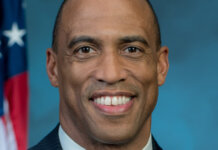What can the mortgage banking industry expect in the new year? According to recent speeches offered by several leaders within the Federal Reserve System, 2010 will be just as challenging as 2009 – and, perhaps, even more so – unless changes in attitude and perception are put into place.
Speaking earlier this month at the Economic Club in Washington, D.C., Federal Reserve Chairman Ben Bernanke put the onus on Congress to improve the regulatory requirements covering both mortgage banking and the wider financial services industry. He particularly singled out the ailing larger institutions for extra oversight.
‘Although regulators can do a great deal on their own to improve financial oversight, the Congress also must act to fix gaps and weaknesses in the structure of the regulatory system and, in so doing, address the very serious problem posed by firms perceived as 'too big to fail,'’ he said. ‘All systemically important financial institutions – not [just] banks – should be subject to strong and comprehensive supervision on a consolidated, or firmwide, basis. Such institutions should be subject to tougher capital, liquidity and risk-management requirements than other firms – both to reduce their chance of failing and to remove their incentive to grow simply in order to be perceived as too big to fail.’
Bernanke also called for a ‘new resolution regime’ that would enable the federal government to close down a non-bank financial services giant in a manner similar to how the Federal Deposit Insurance Corp. is able to close failing banks. He also urged improved risk management standards, particularly in view of dealing with emerging risks.
‘Because of the size, diversity and complexity of our financial system, that task may exceed the capacity of any individual agency,’ he continued. ‘The Federal Reserve, therefore, supports the creation of a systemic oversight council, made up of the principal financial regulators, to identify developments that may pose systemic risks, recommend approaches for dealing with them, and coordinate the responses of its member agencies.’
However, the private sector is not the only part of the industry that will bedevil mortgage bankers in 2010. The federal intervention that resulted in the seizure of Fannie Mae and Freddie Mac was raised by Charles I. Plosser, president and CEO of the Federal Reserve Bank of Philadelphia. In comments before the Philadelphia Fed Policy Forum, Plosser questioned whether the moral hazard relating to Fannie and Freddie outweighed the government's actions in taking over the troubled entities.
‘We had a major moral hazard problem on our hands long before the crisis arose – one that became a major contributing factor to the severity of the crisis,’ he said. ‘The government-sponsored enterprises (GSEs) were rife with long-standing moral hazard problems. Despite warnings from many economists and many Federal Reserve officials, these entities were allowed to operate for private profit but with essentially a government debt guarantee. There is no more classic example of moral hazard than this arrangement. Fannie and Freddie had the incentive to take extraordinary risks at taxpayer expense.’
Plosser noted that the GSEs have already received almost $111 billion in taxpayer funds to stay afloat.
‘My own guess is that the taxpayer costs of rescuing Fannie and Freddie will easily exceed that of any other financial institution that has received taxpayer support from either the Fed or the Treasury,’ he added.
However, Plosser predicted that the combination of moral hazard and too-big-to-fail issues must not be ignored any longer, especially by a Congress that is agitating for regulatory changes.
‘If reforms do not adequately address these problems, then reform efforts will be a failure,’ he stated. ‘The second lesson is that regulators are not perfect, and using regulations that excessively stifle the markets will also fail, because private interests will always seek to escape regulation. Thus, for reform to improve financial stability, it must rely heavily on making market discipline more effective and not simply rely on government rules and regulations.’
But Plosser also acknowledged that attempts to force market discipline on the financial markets may not be successful.
‘In my view, a major lesson of the recent crisis is that our regulations did too little to promote market discipline and, in some cases, actually discouraged market discipline,’ he said. ‘In the case of Fannie and Freddie, their flawed structure and insufficient regulatory oversight actually undermined market discipline. The case for greater use of market discipline and market signals as regulatory tools is a powerful one. Financial markets are dynamic, forward looking and innovative, and despite the events of the past two years, they remain one of the great strengths of our economy. But the dynamism of our financial markets also places a serious constraint on feasible regulatory reforms.
‘Markets will inevitably seek to evade excessively costly or poorly drawn regulations by innovating around them,’ he continued. ‘Even with the best of intentions, regulators will be behind the curve, especially when market participants are looking for ways to evade regulations. If regulators don't harness market forces in an intelligent way, regulatory reform will surely fail.’
Housing jitters
What does all of this mean on a Main Street level? Federal Reserve Governor Elizabeth A. Duke targeted neighborhood stabilization in a recent address to the Community Stabilization Symposium, hosted by the NeighborWorks Training Institute in National Harbor, Md. For Duke, the answer to the challenge is acknowledging that there is no single answer.
‘The first lesson I learned during my travels is that there is no one-size-fits-all strategy for community stabilization,’ she said. ‘The downturn in housing has affected communities in a variety of ways, depending on the underlying economics of each. Because of these variations, a stabilization strategy that is effective in an industrial city facing high unemployment is unlikely to suit a suburban community where employment has remained relatively stable.’
Duke put the blame on some mortgage bankers for being obstinate in their dealings with nonprofit groups and individuals that are trying to stem the rising foreclosure tide.
‘Many community organizations and homeowners have been frustrated by the difficulties of working with mortgage lenders and servicers, and these problems are even more exaggerated in weaker market cities,’ she continued. ‘In the most devastated neighborhoods, some lenders do not even complete the foreclosure process or record the outcome of foreclosure sales, because the cost of foreclosing exceeds the value of the property. Anecdotal evidence suggests that these 'toxic titles' have placed significant numbers of properties in a difficult state of legal limbo.’
Duke added that she did not believe that housing and the relations between homeowners and originators and servicers, alone, could not make or break a neighborhood's economic viability.
‘Foreclosure mitigation activities, by necessity, focus on individual houses and mortgages in an attempt to resolve legal and economic issues between borrowers, servicers and investors,’ she said. ‘Nonetheless, after visiting with community organizations and seeing their work first-hand, it is clear to me that the most effective community stabilization approaches look beyond homes and mortgages. Successful community stabilization requires a broader vision of community – one that factors in the many elements that make a neighborhood a desirable place to live. The bottom line is that housing alone is not sufficient to create sustainable and economically resilient communities.’
For Jeffrey Lacker, president of the Federal Reserve Bank of Richmond, the next obstacle facing mortgage banking will not be on the residential side of the industry.
‘While the outlook has brightened in recent months, we still face major economic challenges,’ said Lacker in comments before the Charlotte, N.C., Chamber of Commerce. ‘In commercial real estate, construction is falling, vacancy rates are rising, and falling property prices are eroding owners' equity positions.’
Lacker does not see quick or easy solutions to this problem in 2010.
‘Holders of commercial-mortgage-backed securities have already taken sizable losses, with more on the horizon, as numerous projects are scheduled for refinancing,’ he warned. ‘And some community banks have lent heavily to commercial real estate developers and are now facing rising delinquencies and losses. No one expects a quick reversal of these negative trends, and as a result, business investment in nonresidential structures is likely to be a substantial drag on U.S. growth in the near term.’
Lacker also pointed to the unemployment figures as being an indicator of whether the current crisis will be extended.
‘The unemployment rate has more than doubled, to a 10.2 percent rate,’ he continued. ‘Wages are under pressure – so far this year, average hourly earnings have only risen at a 2.1 percent annual rate – about half its rate in mid-2007. Going forward, as overall economic activity continues to improve, employment will bottom out and then begin to return to an upward trajectory. Even the more optimistic forecasters, though, do not expect a rapid improvement in national labor market conditions, and we will need to carefully monitor employment and earnings for an extended period.’











